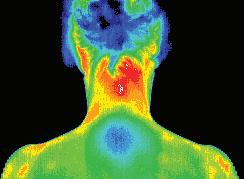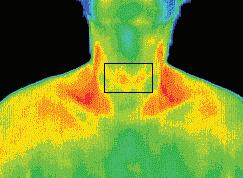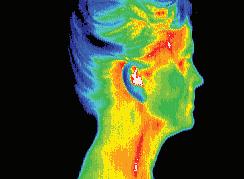
18 minute read
INTEGRATIVE
anna shvets/Pexels.com
INTEGRATIVE WOMEN’S WELLNESS
Advertisement
Five Top Health Concerns and What to Do
by Ronica O’Hara
Anyone walking into a U.S. hospital today will notice something that was inconceivable 50 years ago—one in three practicing physicians is a woman, and among physicians under age 35, it’s three in five. That compares to one in 14 in 1970. For women needing health care, that fact can change everything. “Research says that female physicians provide better care to female patients than male physicians do,” says Harvard Medical School Associate Professor Alice Domar, Ph.D., a pioneer in women’s mind-body medicine. “They are more likely to listen carefully and take complaints seriously.”
That’s just one factor in how health care is improving for women. Only three decades ago, women were simply considered “small men” in medical research and rarely included as subjects in clinical studies. Today, after a 1993 federal mandate ensured their inclusion, it’s been well established that women metabolize drugs differently than men, respond to health threats with a more robust immune system and are more likely to experience side effects. These findings have helped spur major changes for women in standards, dosages, medications and procedures—resulting in fewer cancer deaths, better treatment of autoimmune disorders and more nuanced cardiac care strategies. Although much has improved about women’s health, much more remains to be done.
Cancer
About one in three women is diagnosed with cancer in the course of a lifetime, and they have better survival rates than men, of which one in two receives that diagnosis. Between 2001 and 2017, the overall cancer death rate for women declined by 1.4 percent each year as diagnoses and treatments became more refined and targeted. The number one cancer killer for women is
lung cancer, although 19 percent diagnosed have never smoked. The next most deadly are cancers of the breast, colon/rectum, pancreas and ovaries.
Breast cancer deaths have dropped by 40 percent since 1989, thanks to greater awareness, early detection and better treatments. “Women learned from the AIDS crisis that making noise gets results,” says Domar. “Look at how far breast cancer research and treatment has come in the past 10 to 20 years, how powerful Breast Cancer Awareness Month is, and that everyone recognizes that pink ribbon.” Common symptoms: Bowel changes, lingering sores, fatigue, lumps, unusual discharge, difficulty digesting or swallowing, nagging cough or hoarseness, belly or back pain. New research: An international research team has identified a direct molecular link between meat and dairy diets and the development of antibodies in the blood that increases the chances of developing cancer. Medical advances: Painful, invasive biopsies may become a thing of the past. Mayo Clinic researchers have developed a simple blood test that detects more than 50 types of cancer, as well as their location within the body, with a high degree of accuracy, and the City of Hope Cancer Center, in Los Angeles, has developed a urine test that analyzes cell-free fragments of DNA to detect cancer.
Preventive strategies: Vitamin D supplementation lowers the risk of mortality across all cancers, German researchers found, estimating that if all Germans older than 50 took such supplements, up to 30,000 cancer deaths per year might be avoided. A 10-year study found that people between 55 and 74 that took a low-dose aspirin at least three times each week lowered their risk of all types of cancer by 15 percent and overall mortality by 19 percent.
Heart Disease
One in three American women die from heart disease, more than all cancers combined. “Unfortunately, awareness that heart disease can and does happen to women remains low, and this results in delay of care,” says cardiologist Nicole Harkin of Whole Heart Cardiology, in San Francisco. “Women tend to seek medical care later in the course of their heart attack and with more risk factors, resulting in poorer outcomes, and they are more likely than men to die of their first heart attack.”
Women have different symptoms of heart disease than men, are often misdiagnosed and have a 20 percent greater risk of dying within five years of a heart attack. Pregnant women that develop hypertension are two to five times more likely to later develop cardiovascular disease.
Common symptoms: Heart pressure, fatigue, breathlessness and pain between the shoulder blades. New research: Eating more than seven servings per day of refined grains like croissants and white bread increased the risk of heart disease by 33 percent and stroke by 47 percent, concluded a study
lionidast akaoishik ama/Pexels.com
allyson weislogel/Unsplash.com
in Th e British Medical Journal. In a Stanford study, participants that ate plant-based meat for eight weeks had improved markers of heart health, lower LDL levels and lost two pounds compared to those eating meat. Medical advance:To successfully fi x a fl oppy mitral valve that’s hampering blood fl ow in the heart, doctors can guide a catheter up a patient’s leg vein and staple the troubled parts of the valve with a tiny clip, a safer and less invasive procedure than open-heart surgery. Preventive strategies: Eating nuts several times a week lowers by 30 to 50 percent the risk of heart attacks, sudden cardiac death and cardiovascular disease, four large cohort studies have shown. Older women with high fi tness levels have one quarter the risk of dying from heart disease as women that are out of shape, report Spanish researchers.
Autoimmune Diseases
Th e prevalence of autoimmune diseases has grown by one half in two decades, even as medications and targeted therapies have kept more patients active and out of wheelchairs. “Where it used to be the norm for many physicians to consider women with some autoimmune illnesses to be neurotic, that approach is now being recognized as being abusive and unacceptable. Th is is a critical step towards recovery,” says chronic fatigue expert Jacob Teitelbaum, M.D., author of From Fatigued to Fantastic!
About 80 percent of the 23 million Americans that suff er from debilitating autoimmune diseases are women, and those conditions tend to develop during childbearing years. Th e eighth-leading cause of death among women, these illnesses shorten lifespan by an average of eight years. Th e 80-plus diseases, including fi bromyalgia, lupus, celiac disease, Type 1 diabetes, psoriasis and rheumatoid arthritis, are linked to genetics, environmental triggers, some medications, obesity, injuries and stress. Common symptoms: Th ese vary widely, but may include achy muscles, fatigue, recurring low-grade fever, joint pain and swelling, skin problems, abdominal pain and swelling, hair loss, swollen glands and tingling in hands and feet. New research: Eating signifi cantly fewer foods containing the amino acid methionine, found at high levels in meat, fi sh, dairy and eggs, could slow the onset and progression of autoimmune disorders such as multiple sclerosis in high-risk individuals, reports a study in Cell Metabolism. Medical advance: Evidence is mounting that low doses of naltrexone, a substance-abuse treatment drug, can treat conditions like lupus, Crohn’s disease and rheumatoid arthritis by normalizing the immune system and relieving pain with few side eff ects. “It costs only about 70 cents a day, is made by compounding pharmacists and is remarkably benefi cial for a host of autoimmune conditions,” says Teitelbaum. Preventive strategy: To fi ght infl ammation, take a daily turmeric or curcumin supplement that includes piperine (black pepper) for better absorption. A University of Houston meta-study in Nutrients found that curcumin supplements improved symptoms in 14 osteoarthritis, two ulcerative colitis and eight Type 2 diabetes studies.
Confused about health Confused About Health Coverage? Coverage? ask me, I Can help!I Can Help!
Flexible choices & customized health coverage designed to fit your needs $ budget.
Insurance underwritten by: Freedom Life Insurance Company of America National Foundation Life Insurance Company. Not all products available in all states. Exclusions and limitations apply.
GENAD-1-0416
18 x12
Yvette sechrist mcglasson
Licensed Agent, USHealth | A UnitedHealthCare Company Visit Ushagent.com/yvettesechrist Callt239-326-2060


Hormonal Imbalances
Th e past 20 years has seen signifi cant improvements in the studies and treatments of female hormonal issues. “Th ere are now treatment options that allow women to transition into menopause, options for prevention of osteoporosis and momentous changes in fertility,” says Stephanie Seitz, a naturopathic family physician in Scottsdale, Arizona. At the same time, she adds, “I have seen environmental toxins rising in my female population. I see young girls coming in with polycystic ovary syndrome, early menarche and painful menstrual cramping; women having trouble getting pregnant for unknown reasons; the rise of fi broids, premature ovarian insuffi ciency and endometriosis.”
Hormones are the body’s chemical messengers, regulating processes ranging from hunger to blood pressure to mood and playing a key role in reproduction. Th ey have come under assault from endocrine disrupters, thousands of largely unregulated per- and polyfl uoroalkyl substances, abbreviated PFAS. Th ese “forever chemicals” are found in everything from plastics to cushions to canned foods, and are in the blood of 98 percent of Americans. Studies have linked them to girls experiencing puberty one year earlier than 40 years ago; to rising cases of infertility, miscarriages and low birth weight; to menopause occurring two to four years earlier; and to obesity, polycystic ovarian syndrome, endometriosis and breast cancer.
Common symptoms: Because hormones regulate all of the body’s processes, symptoms of imbalance run the gamut and may







New research: Early menstruation increases the likelihood of hot fl ashes and night sweats decades later at menopause, according to a University of Queensland study. Eating fi ve teaspoons of extra-virgin olive oil daily reduced women’s moderate to severe menstrual cramps by 83 percent in two months, Iranian researchers found. Medical advance: A major study of 9,000 postmenopausal women with hormone-sensitive breast cancer showed 94 percent that received hormonal therapy, but not chemotherapy, did not have recurrences.
Preventive strategies: To avoid toxic chemicals, buy organics; replace plastic kitchen containers with glass; replace Tefl on pans with ceramic or cast-iron; use chemical-free cosmetics and shampoos; nix air fresheners and chemical cleaners; and check out food and care products at the Environmental Working Group (ewg. org). To help detox the body, consider working with a naturopathic doctor to develop a program that may include cleansing foods, herbs, saunas, elimination diets and chelators such as activated charcoal and algae.
Depression
Women are twice as likely as men to develop depression, with one in four having a major episode at some point in life, yet fewer than half seek treatment. “Many women are too busy caring for others and feel guilty about their depression, fearing it could get in the way of their caregiving goals,” says New York psychoanalyst Claudia Luiz. “Many have the fantasy that if they open that door and allow themselves to focus on their feelings, they won’t be able to keep going.”
Depression occurs most frequently in women ages 25 to 44, and one in fi ve teenage girls reports having had a major depressive episode, a number that has exploded due to social media use. Psychotherapy is eff ective for 62 percent of adults with depression, antidepressants work for 54 percent and combining the two is helpful for 72 percent. Common symptoms: Sadness, anxiety, fl at feeling, loss of motivation or feelings of pleasure, change of eating or sleeping patterns, low energy, diffi culty concentrating or headaches. New research: Sleeping irregular hours, doing night shift s and working for more than nine hours a day have been shown to put women at higher risk of depression, while eating more dietary fi ber in produce, grains and legumes signifi cantly lowers this risk. Medical advances: For the estimated one in four people with depression that doesn’t respond to medication or therapy, emerging approaches off er fresh hope. Low doses of the anesthetic drug ketamine lift ed the depression of 70 percent of hard-to-treat subjects by targeting specifi c serotonin receptors, Swedish researchers report. Transcranial magnetic stimulation, which uses magnetic pulses to stimulate parts of the prefrontal cortex, lift s symptoms for 50 to 60 percent of subjects, studies show. Preventive strategies: Eating at least two servings a week of wild-caught, oily fi sh or a daily 1,000-to-2,000-milligram fi sh oil supplement with a 60-to-40 EPA to DHA ratio has been shown to be eff ective for symptoms of depression, bipolar disorder, attention defi cit hyperactivity disorder and postpartum depression. Taking a brisk daily walk in nature with a friend or dog lowers four factors linked to depression: a “nature defi cit”, physical inactivity, low vitamin-D levels and isolation.
Natural health writer Ronica O’Hara can be reached at OHaraRonica@gmail.com.

Fountain of Youth Draws Closer with Promising Treatment
by Eduardo Maristany
Millions of adults spend a lot of time and money on topical creams, makeup, hairstyles, clothing and surgical treatments in an attempt to look younger. While these may work, inside, the body is still aging. Although aging is a natural occurrence, researchers are coming closer to pinpointing aging’s specifi c causes other than our numerical age. Th ey are also developing solutions to stall nature. Many doctors of functional medicine are increasingly optimistic about a new treatment, nicotinamide adenine dinucleotide (NAD+) that targets the body on the molecular level. NAD+ is a naturally occurring cofactor/coenzyme derived from vitamin B3 (niacin), present in all living cells. NAD+ starts to diminish as we age, so research has focused on the impact of reintroducing NAD+ to the body.
NAD Could be the Fountain of Youth
NAD+ is already being referenced as the body’s anti-aging molecule. As a supplement, NAD+ does not need U.S. Food and Drug Administration approval, so it’s now available to the general public. A staff member at the Naples Center for Functional Medicine asked to take NAD+ in its oral supplement form to determine if it was indeed the real deal and merited consideration as a treatment option. Monitored results included a better and deeper sleep, which allows the body to fully rejuvenate each night, more energy, improvement of overall mood and a sharper mind. Additionally, the mitochondria were supercharged, which helps to burn fat and potentially reduce blood glucose levels as seen in animal studies. Some genetics experts believe that NAD+ treatments might be more eff ective than stem cell therapy. According to top researcher Dr. David Sinclair, at Harvard Medical School, NAD+ actually can reprogram cells to regress to a more youthful state. Th at statement alone warrants a closer look at NAD+ as a supplement.
Benefi ts of NAD+
Th e benefi ts are far-reaching within the human body, impacting the brain, metabolism, energy levels and cell repair. NAD+ potentially slows cognitive decline and promotes healthy brain functions, mental clarity, higher concentration levels and memory function. Studies in mice showed these results. Presently, studies involve humans with Parkinson’s disease and other neurodegenerative disorders. NAD+ potentially helps control depression, anxiety and mood disorders. Research has shown that people with critically low levels of NAD are at a higher risk for developing problems related to addiction, anxiety and other mental disorders. NAD+ boosts energy levels and fi ghts chronic fatigue by inserting itself directly into the Kreb’s cycle, or the energy cycle, in the mitochondria of the body’s cells that create energy. As we age, our natural levels of NAD+ decline, explaining why fatigue is the number one complaint among older adults.
NAD+ provides a jolt to metabolism, which burns fat and helps the body regulate blood sugar levels. In studies, diabetic and obese rats showed improvements in their metabolism with NAD+ supplementation. NAD+ allows cells to regenerate and repair, healing the body as it recovers from injuries and rigorous exercise. NAD+ is a very strong sirtuin activator. Sirtuin genes have the ability to repair cells and regress them to a more youthful state.
Who is Using NAD+
NAD+ is in all of our bodies, which means everyone benefi ts from the coenzyme. However, some groups of individuals are turning toward NAD+ therapy in larger numbers, including athletes seeking to improve endurance, performance and recovery; executives wanting to enhance concentration, focus and memory; and individuals with neurological disorders and other conditions such as Alzheimer’s disease, Parkinson’s disease, anxiety and depression, as well as individuals with medical ailments and conditions such as fatigue, unrestful sleep and fi bromyalgia.
Th erapy Options
Two primary ways to receive NAD+ treatments are intravenous therapy (IV) and oral supplements. IV therapy conducted in a doctor’s offi ce or medical clinic has grown in popularity because vitamins, minerals and nutrients are introduced directly into an individual’s bloodstream, allowing for quick absorption and immediate impacts. Taking NAD+ in tablet form introduces the treatment through an individual’s digestive system. Th e impacts aren’t immediate. Th ey are felt within hours. Individuals can take NAD+ oral supplements daily from their home just like a multivitamin. All of us want to look younger, but we should be focused on living longer, healthy and pain-free lives. Science shows that the fountain of youth isn’t found in a mythical spring, rather potentially as NAD+ within our own bodies. Some of us just need a little extra as our levels decrease with age.
Dr. Eduardo Maristany is a board-certifi ed internal medicine physician specializing in functional and integrative medicine, genomics testing and men’s health at the Naples Center for Functional Medicine, located at 800 Goodlette Rd. N., in Naples. For more information, call 239-649-7400 or visit NaplesCFM.com. See ad, page 55.




CELEBRATING 27 years in THE business of


Thermal Imaging Screening Reveals Hidden Secrets
Include Thermal Imaging in a Preventative Approach to Women’s Health
by Taryn Brandt
The Digital Infrared Th ermal Imaging Women’s Health Check (WHC) is a 30-minute non-invasive test of physiology. Th is valuable report alerts a healthcare practitioner to changes that can indicate developing pathology and dysfunction. With WHC, breast, OB-GYN, thyroid, endocrine, visceral and autonomic status are evaluated, providing a holistic view of overall health and future risk levels that can be used as an important part of a preventative health program. WHC is a way for women to be proactive in maintaining their health and preventative with issues that can be improved. It is also excellent at providing an opportunity to intervene with any fi ndings that justify further testing. A WHC report provides risk factors so an individual can take positive action to improve their overall wellness with everything from lifestyle changes to holistic treatment or even medical intervention. WHC focuses on the following regions:


Autoimmune
A loss of normal temperature gradients throughout the body can indicate autonomic disease or dysfunction such as early-stage diabetic changes.
OB-GYN and Reproductive
Ovarian infl ammation can be associated with hormonal dysfunction, polycystic syndrome, infl ammatory pelvic disease and endometriosis.
Head and Neck

Th e head and neck views that are graded in WHC include sinuses, arteries, dental, thyroid, lymphatic and autonomic, as well as any indication of infl ammation or infection that can aff ect the immune system. Vascular and infl ammatory fi ndings can provide a warning before symptoms develop, arteries become infl amed and occlusion becomes clinically signifi cant.
All Women Benefi t from WHC Screening
Functional health encompasses so many potential areas that affect women of every age and medical history that a holistic approach is needed to make sense of the individual’s history and symptoms, as well as the physiological testing results provided by a digital infrared thermal imaging women’s health check. This scan addresses age-related challenges and findings that may indicate autonomic/autoimmune dysfunction, endocrine/adrenal system dysfunction, vascular, lymphatic and breast health dysfunction. All of these issues are pivotal to the overall health of women of any age. Thermography screening is non-invasive, painless and radiation-free.

Breast Health
WHC includes additional fi ndings relating to physiological changes in the breasts and is an important piece of the breast screening puzzle. Breast health is integral to women’s holistic wellness, as well as an early indicator of developing pathology.
Digestive
Abdominal fi ndings include colon infl ammation that can indicate irritable bowel syndrome, leaky gut, diverticulitis and other risk factors that justify colonoscopy or preventative treatment.
Taryn Brandt, CCT level III, is the owner of Southwest Medical Thermal Imaging & Ultrasound, LLC, with locations at 9200 Bonita Beach Rd., Ste. 213, in Bonita Springs, 7680 Cambridge Manor Pl., Ste. 100, in Ft. Myers and 1570 Colonial Blvd., Ste. A, in Ft. Myers. For more information on WHC and medical thermography risk assessment, call 239-949-2011 or visit ThermalClinic.com. See ad, page 19.



